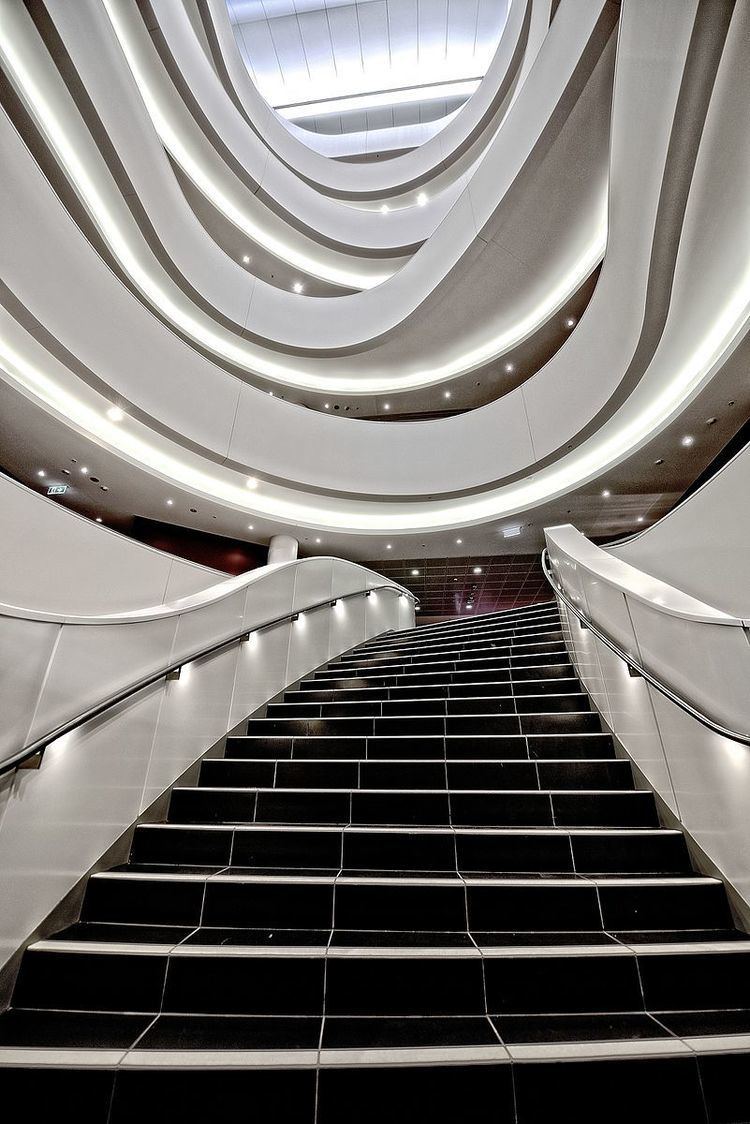Academic Director Steve Simpson AC, FAA Phone +61 2 8627 1616 | ||
 | ||
Established 2012; 5 years ago (2012) Hours Closed now Friday7:30AM–5PMSaturdayClosedSundayClosedMonday7:30AM–5PMTuesday7:30AM–5PMWednesday7:30AM–5PMThursday7:30AM–5PM | ||
Charles perkins centre summer research scholarship
The Charles Perkins Centre is an Australian medical research, education institute and clinic that primarily focuses on diabetes, cardiovascular disease, obesity and as well as other related conditions. The Centre is affiliated with the University of Sydney and is located within the Royal Prince Alfred health precinct at the Camperdown campus of the university in Sydney, New South Wales. The Centre is named in honour of Charles Perkins, the first man of Aboriginal descent to graduate from the University of Sydney. The Centre's academic director is Professor Steve Simpson AC, FAA.
Contents
- Charles perkins centre summer research scholarship
- The charles perkins centre a new approach to research and education
- Research and education focus
- Background
- Building
- References
Designed by Francis-Jones Morehen Thorp with Building Studio, construction of the A$350 million Charles Perkins Centre building began in 2012 and it was officially opened in June 2014. The centre was shortlisted for the World's Best Building award in the Higher Education and Research category at the 2015 World Architecture Festival.
The charles perkins centre a new approach to research and education
Research and education focus
Obesity, diabetes and cardiovascular disease are the leading causes of death, disability and reduced quality of life in Australia. They are also considered epidemics globally.
Background
Charles Perkins was one of Australia's most prominent Aboriginal activists. Born in 1936 to an Arrernte woman and a Kalkadoon man in Alice Springs, Northern Territory, Perkins graduated from the University of Sydney with a Bachelor of Arts in 1966. Prior to this, he worked for an Adelaide fitter and turner company and had also worked for the City of South Sydney, cleaning public toilets. Perkins was a key member of the Freedom Ride, a bus tour through New South Wales protesting small-town discrimination of Aboriginal people. The action was inspired by the American Civil Rights Freedom Ride campaign in 1961 which travelled from Washington D.C. to New Orleans.
In 1969 Perkins began his career as a public servant as a Senior Research Officer with the Office of Aboriginal Affairs. In 1972, as a public servant, he was suspended for alleged improper conduct after he described the Liberal and the Country Coalition government in Western Australia as being "racist and redneck". He later became the first Aboriginal to become appointed as the Permanent Secretary of the Department of Aboriginal Affairs in 1981. He was a strident critic of the Australian Government and their policies. Perkins also had a career as a soccer player, serving as president for the National Soccer League team Canberra City in the Australian Capital Territory.
He died in 2000 from renal failure and is survived by a large family, with two daughters and a son. During the 1970s Perkins had a kidney transplant and at the time of his death was the longest post-transplant survivor in Australia.
Building
Construction began in late 2012. It was built on a budget of $385 million. Perkins serves as the symbolic face of the centre, aimed at researching and finding solutions to various illnesses, with over 900 clinicians, students and researchers. Professor Steve Simpson said that "He [Perkins] sought to lead collaborations in situations where a single person or agency could not deliver. In the same way, the Charles Perkins Centre looks beyond traditional disciplinary boundaries to improve the health of individuals, communities and the nation". Perkins' wife, Eileen and their daughters Hetti, Rachel and son Adam attended the black-tie opening of the building in June 2014.
The building is 46,700 square metres (503,000 sq ft) and is six storeys tall with three basement levels. The centre can house 950 researchers and 1400 students, with both wet and dry laboratory spaces. The ground and basement levels contain clinical facilities in affiliation with the Royal Prince Alfred Hospital. The interior atrium is reminiscent of the atrium inside the Guggenheim Museum in New York City. The full-height atrium features curved balconies and interconnecting sweeping stair cases, serving as the structural expression of the building's purpose. Having been called the "skeletal system of the building", it is the most prominent and noticeable feature of the centre's interior. The curving atrium was designed by architects Francis-Jones Morehen Thorp who collaborated with the Cubic Group responsible for the fabrication and installation of the primary atrium elements. Additionally, it features a bank of glazed elevators common in atrium style buildings.
The northern facade of the building was designed in sandstone, reflecting the Gothic architecture of the nearby St John's College. The main southern exterior, which looks out onto the Centenary Institute, was designed primarily in glass and aluminium. The building features an "X-Lab", multipurpose teaching spaces, microscopy teaching labs, an exercise physiology gym and a 360-seat auditorium.
